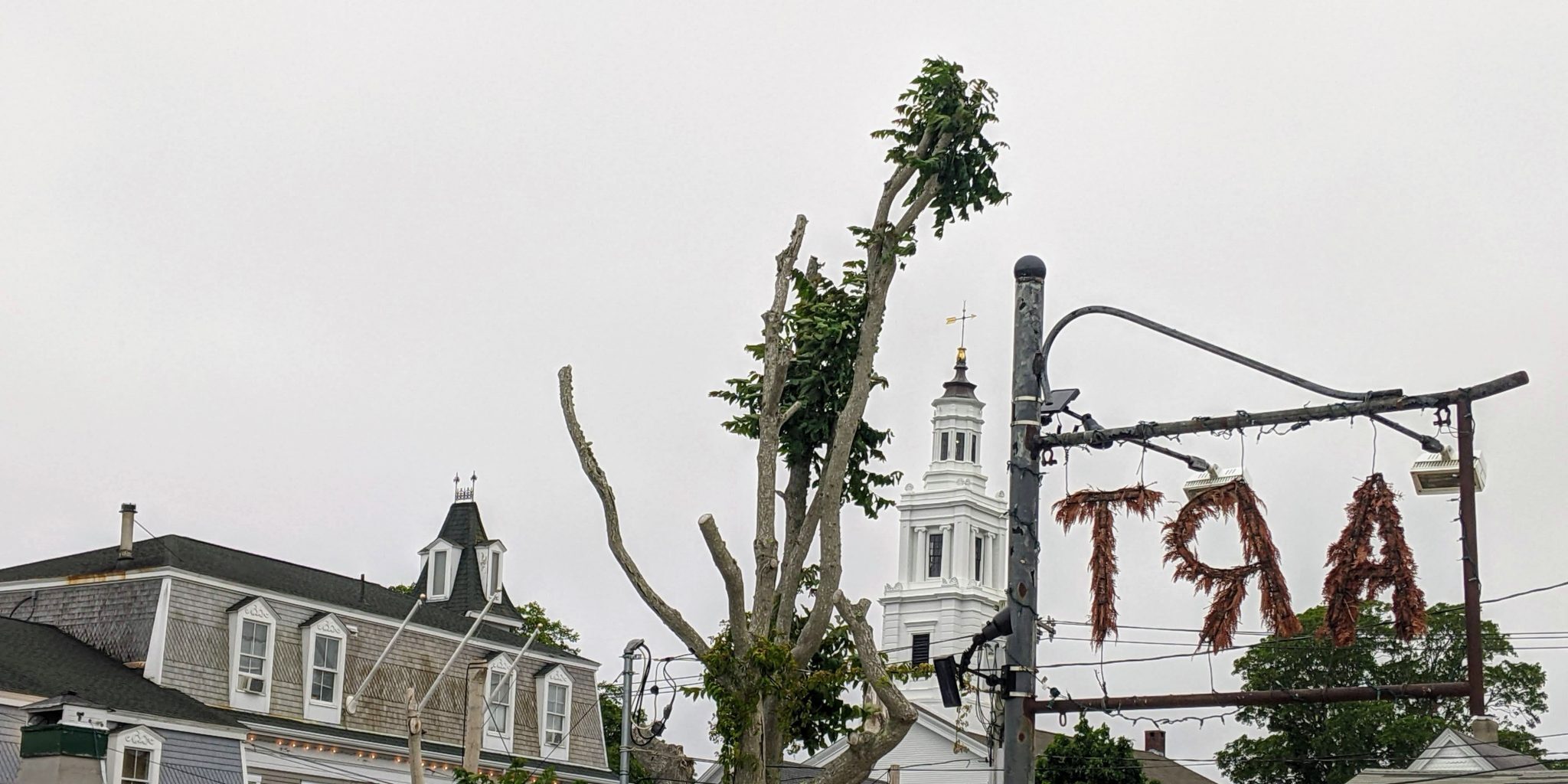
The Fallacy and Futility of Fixity
Reflection by Dan Koff, Regional Arts and Culture Planner
It was June 30, 2021, and the show had already started as we slid into our third-row seats at Provincetown’s Crown and Anchor. Local legend Dina Martina was singing “It’s Raining Them,” a rendition of the Weather Girls’ ode to male virility she’d flipped into an homage to trans acceptance. The packed room erupted in laughter, easily seen and heard among the mostly maskless mass of people. It was thrilling to feel uplifted by a crowd again, and also a bit unsettling.
As we left Ptown, we saw the crowds getting off the ferries for the Fourth of July weekend. Little did they know at the time, but the boatloads of boys in bikini bottoms arriving for the holiday were heading toward a convergence of two compounding crises: an evolving pandemic and climate change. It was a confluence that would result in a significant COVID cluster: 965 people tested positive for COVID after that weekend.
In a typical year, much of Provincetown’s social life is held outdoors. If that had been the case this year, at least some of the virus’s spread might have been tempered. However, that weekend brought rain all day every day. People were pushed indoors and into shops, restaurants, and packed bars, and few wore masks.
While this was happening on the Cape, I was in Maine celebrating a family member’s 80th birthday. Twenty-three family members and five dogs were present. It was our first in-person gathering since the pandemic began. It was refreshing, relaxing, and most important, real. Once news of the COVID cluster emerged, however, the warm memories of hugging and laughing with family shifted to anxiety and fear.

Much was learned from the Provincetown cluster, in part because it was relatively easy to study: the population was vigilant about testing and forthright about contact tracing. The outbreak was notable, too: it was an abundance of cases that broke through in a highly-vaccinated community. A full 74 percent of the positive tests were in people who had been vaccinated. Without that protection, even more would likely have tested positive, more than the seven who had to be hospitalized might well have gotten severely ill, and the death rate could easily have been upwards of the zero that it was.
In the wake of the cluster, the CDC issued new mask recommendations nationwide. This viral event I so barely missed marked the beginning of our realization that vaccine efficacy lowers over time and is less effective against Delta and other variants.
These rapid shifts in protocol and perception left me perplexed. The social isolation from the prior 15 months showed me just how much we need other people in our lives to feel like ourselves. The vaccine promised a return to pre-pandemic life. I’d felt liberated to make social connections again. But that impulse had put me and my family at risk.
Our prior assuredness in the vaccine as a silver bullet that would liberate us from COVID precautions has been upended as the case trajectory moves upward and we are once again grappling with whether and how we meet in person. In this world reshaped by the pandemic and climate change, the only constant seems to be change. There is change in the infection rates, change in the vaccination rates, change in our understanding of how the virus reacts to the vaccine. The outdoors is changing as smoke from wildfires out west creates hazardous air quality in the east. And there is internal change in how we feel in the moment, and whether we feel prepared to socialize with other people, if and when we get the chance. Maybe that’s okay. Maybe that’s the lesson here, that in order to adapt, we need to become more adaptive.
Becoming adaptive means giving up the fallacy and futility of fixity. Rather than rotating between the false choice of social isolation and maximum contact, of a perfect state of nature and one polluted by humans, or even of a male-female binary, we can recognize that these notions are not fixed, there is slippage between them, space to navigate, and new ways to operate. By adopting a mindset that embraces uncertainty, we can become more prepared for a changing reality.
Perhaps it is appropriate that Provincetown plays a role in charting a path towards an adaptive mindset. The dunes above the beaches, the marshland, they all move over time. It’s perceptible from year to year. The place rests on shifting sand, so it’s not hard to imagine how some concepts once seen as fixed – like nature or gender – all feel fluid. The whole place feels tenuous, as if anything can be made or remade at any time. The creative potential is palpable, and the fact that Provincetown is a mecca for live performance makes sense in context. Its position at the point of the Cape makes it feel fragile and full of potential.
The mental whiplash I’ve experienced this summer has shown me that the cost of isolation is the shared laughter and delight that live performance has to offer. The need to experience our interconnectedness is related to – and comes in tension with – our responsibility to our family. It is disjointing when these joyful moments of togetherness that are a balm to the anxieties of our time become moments for worry and fear.
Watching Dina Martina on stage that night felt magical, and not because the show was an elaborate spectacle. Dina needs no props. When she walked over to the piano and picked up a shaker, she looked at it inquisitively, then immediately put it down and proceeded with her bit. As she sang, she shimmied through the audience, voicing the noise the shaker would have made at random audience members. Every time she “cha-cha-ed,” the room erupted in laughter. It’s the kind of comedy that just wouldn’t have worked online.
Dina’s shows are an act of co-creation in which the audience is an active participant, generating a flow that brings the whole room into harmony. It allows for a moment of escape from the floods, fires, and fears of this moment. The precariousness inherent in live performance keeps it fresh. It necessitates constant maintenance of attention, and through attention, rejuvenation. If only we can continue to give ourselves permission to find and experience these moments as safely as we can, then we may continue to center joy in our lives. To adopt an adaptive mindset means embracing change and becoming conscious of the creative capacity in each moment.
